The Summer 2019–2020 Wildfires in East Coast Australia and Their Impacts on Air Quality and Health in New South Wales, Australia
Abstract
1. Introduction
2. Materials and Methods
3. Results
3.1. Meteorology and Transport of Wildfire Pollutants
3.1.1. November and December 2019 Period
3.1.2. January 2020 Period
3.2. Effect on Air Quality
3.3. Population Exposure to Wildfire Particulates and Health Effects
4. Discussion
5. Conclusions
Supplementary Materials
Author Contributions
Funding
Institutional Review Board Statement
Informed Consent Statement
Data Availability Statement
Acknowledgments
Conflicts of Interest
Appendix A
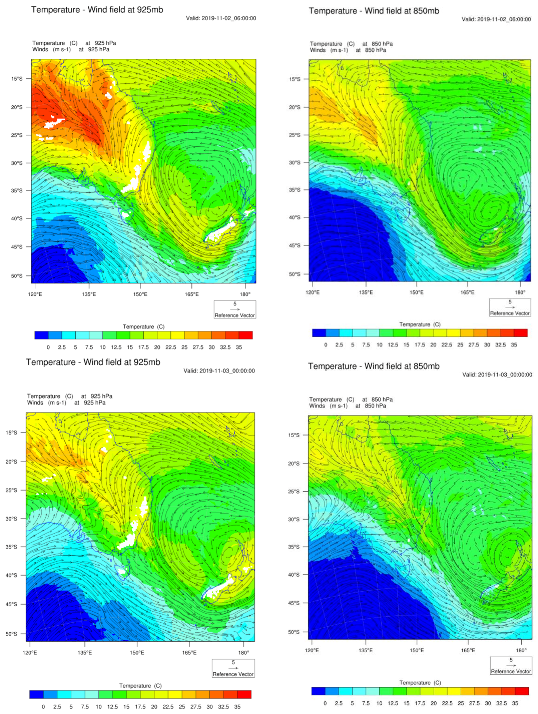


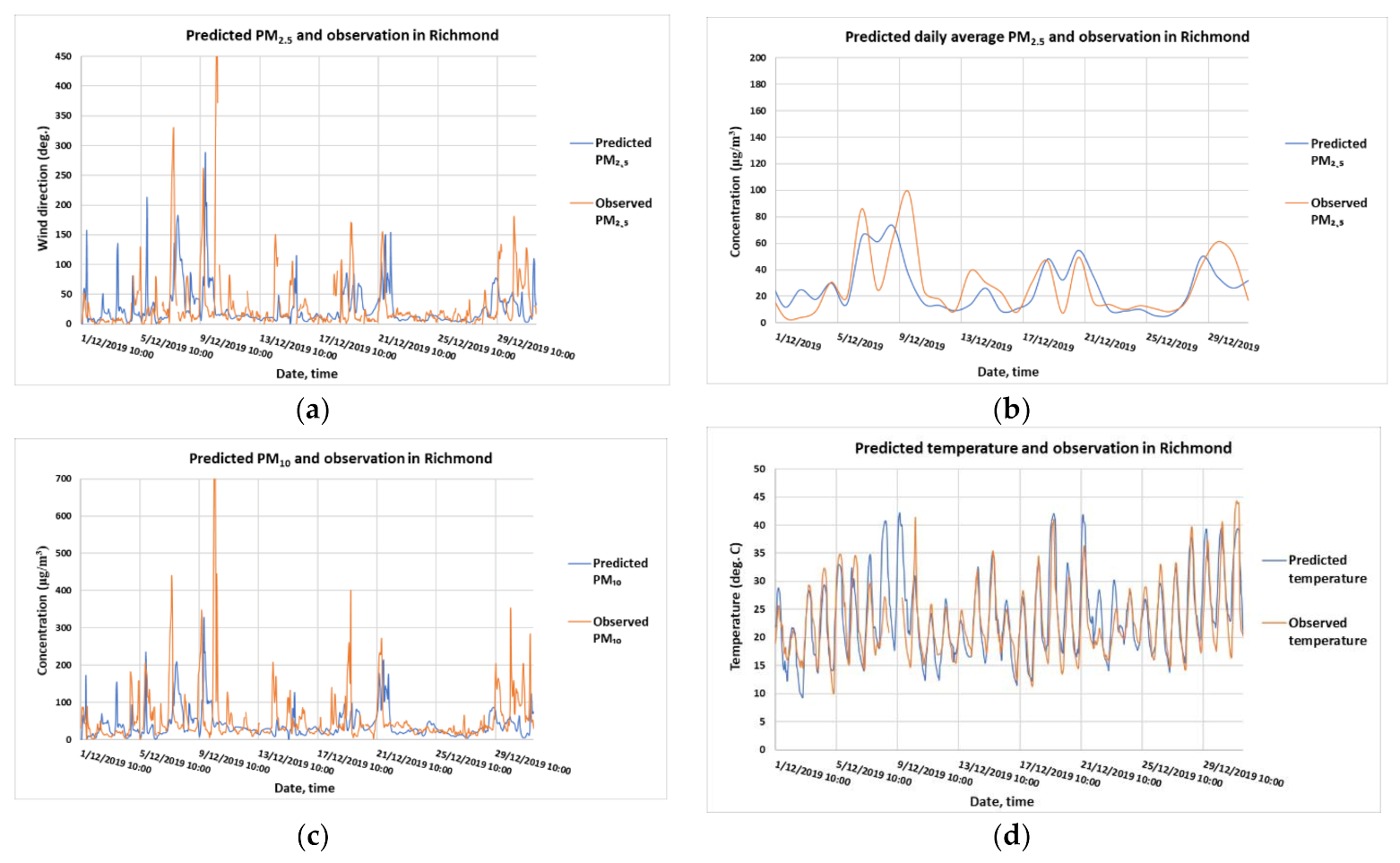

References
- Korasidis, V.; Wallace, M.; Wagstaf, B.; Hill, R. Evidence of fire in Australian Cenozoic rainforests. Palaeogeogr. Palaeoclimatol. Palaeoecol. 2019, 516, 35–43. [Google Scholar] [CrossRef]
- Huss, J.C.; Fratzl, P.; Dunlop, J.W.; Merritt, D.J.; Miller, B.P.; Eder, M. Protecting offspring against fire: Lessons from Banksia seed pods. Front. Plant Sci. 2019, 10, 283. [Google Scholar] [CrossRef] [PubMed]
- Morgan, G.W.; Tolhurst, K.G.; Poynter, M.W.; Cooper, N.; McGuffog, T.; Ryan, R.; Wouters, M.A.; Stephens, N.; Black, P.; Sheehan, D.; et al. Prescribed burning in south-eastern Australia: History and future directions. Aust. For. 2020, 83, 4–28. [Google Scholar] [CrossRef]
- Mariani, M.; Fletcher, S.; Holz, A.; Nyman, P. ENSO controls interannual fire activity in southeast Australia. Geophys. Res. Lett. 2016, 43, 10–891. [Google Scholar] [CrossRef]
- Davey, S.A.; Sarre, A. Editorial: The 2019/20 Black Summer bushfires. Aust. For. 2020, 83, 47–51. [Google Scholar] [CrossRef]
- Australian Institute of Health and Welfare (AIHW). Australian Bushfires 2019–20, Exploring the Short-Term Health Impacts. 2020. Available online: https://www.aihw.gov.au/getmedia/a14c3205-784c-4d81-ab49-a33ed4d3d813/aihw-phe-276.pdf.aspx?inline=true (accessed on 31 January 2021).
- World Meteorological Organization (WMO). Australia Suffers Devastating Fires after Hottest, Driest Year on Record. 2020. Available online: https://public.wmo.int/en/media/news/australia-suffers-devastating-fires-after-hottest-driest-year-record (accessed on 31 January 2021).
- Walter, C.; Schneider-Futschik, E.; Knibbs, L.; Irving, L. Health impacts of bushfire smoke exposure in Australia. Respirology 2020, 25, 495–501. [Google Scholar] [CrossRef] [PubMed]
- Borchers Arriagada, N.; Palmer, A.; Bowman, D.; Morgan, G.; Jaluladin, B.; Johnston, F. Unprecedented smoke-related health burden associated with the 2019–20 bushfires in eastern Australia. Med. J. Aust. 2020, 213, 282–283. [Google Scholar] [CrossRef]
- Nguyen, H.; Trieu, T.; Cope, M.; Azzi, M.; Morgan, G. Modelling Hazardous Reduction Burnings and Bushfire Emission in Air Quality Model and Their Impacts on Health in the Greater Metropolitan Region of Sydney. Environ. Model. Assess. 2020, 25, 705–730. [Google Scholar] [CrossRef]
- Delfino, R.J.; Brummel, S.; Wu, J.; Stern, H.; Ostro, B.; Lipsett, M.; Winer, A.; Street, D.H.; Zhang, L.; Tjoa, T.; et al. The relationship of respiratory and cardiovascular hospital admissions to the southern California wildfires of 2003. Occup. Environ. Med. 2009, 66, 189–197. [Google Scholar] [CrossRef]
- Horsley, J.; Broome, R.; Johnston, F.; Cope, M.; Morgan, G. Health burden associated with fire smoke in Sydney, 2001–2013. Med. J. Aust. 2018, 208, 309–310. [Google Scholar] [CrossRef]
- Mueller, W.; Loh, M.; Vardoulakis, S.; Johnston, H.J.; Steinle, S.; Precha, N.; Kliengchuay, W.; Tantrakarnapa, K.; Cherrie, J.W. Ambient particulate matter and biomass burning: An ecological time series study of respiratory and cardiovascular hospital visits in northern Thailand. Environ. Health 2020, 19, 1–2. [Google Scholar] [CrossRef] [PubMed]
- Yao, J.; Brauer, M.; Wei, J.; McGrail, K.M.; Johnston, F.H.; Henderson, S.B. Sub-Daily Exposure to Fine Particulate Matter and Ambulance Dispatches during Wildfire Seasons: A Case-Crossover Study in British Columbia, Canada. Environ. Health Perspect. 2020, 128, 1–10. [Google Scholar] [CrossRef]
- Hamilton, D.S.; Scanza, R.A.; Rathod, S.D.; Bond, T.C.; Kok, J.F.; Li, L.; Matsui, H.; Mahowald, N.M. Recent (1980 to 2015) Trends and Variability in Daily-to-Interannual Soluble Iron Deposition from Dust, Fire, and Anthropogenic Sources. Geophys. Res. Lett. 2020, 47, e2020GL089688. [Google Scholar] [CrossRef]
- ECMWF (European Centre for Medium-Range Weather Forecasts). Copernicus Atmosphere Monitoring Service: Wildfires continue to rage in Australia; ECMWF: Reading, UK, 2020; Available online: https://atmosphere.copernicus.eu/wildfires-continue-rage-australia (accessed on 12 February 2021).
- Knibbs, L.D.; de Waterman, A.M.C.; Toelle, B.G.; Guo, Y.; Denison, L.; Jalaludin, B.; Marks, G.B.; Williams, G.M. The Australian Child Health and Air Pollution Study (ACHAPS): A national population-based cross-sectional study of long-term exposure to outdoor air pollution, asthma, and lung function. Environ. Int. 2018, 120, 394–403. [Google Scholar] [CrossRef] [PubMed]
- Borchers-Arriagada, N.; Palmer, A.J.; Bowman, D.M.; Williamson, G.J.; Johnston, F.H. Health Impacts of Ambient Biomass Smoke in Tasmania, Australia. Int. J. Environ. Res. Public Health 2020, 17, 3264. [Google Scholar] [CrossRef] [PubMed]
- Howard, Z.; Carlson, S.; Baldwin, Z.; Johnston, F.; Durrheim, D.; Dalton, C. High community burden of smoke-related symptoms in the Hunter and New England regions during the 2019–2020 Australian bushfires. Public Health Res. Pract. 2020, 30, e30122007. [Google Scholar] [CrossRef] [PubMed]
- Wilkins, J.; Pouliot, G.; Foley, K.; Appel, W.; Pierce, T. The impact of US wildland fires on ozone and particulate matter: A comparison of measurements and CMAQ model predictions from 2008 to 2012. Int. J. Wildland Fire 2018, 27, 684–698. [Google Scholar] [CrossRef]
- Ooi, M.C.; Chuang, M.T.; Fu, J.S.; Kong, S.S.; Huang, W.S.; Wang, S.H.; Chan, A.; Pani, S.K.; Lin, N.H. Improving prediction of trans-boundary biomass burning plume dispersion: From northern peninsular Southeast Asia to downwind western north Pacific Ocean. Atmos. Chem. Phys. Discuss. 2021. in review. [Google Scholar] [CrossRef]
- Andreae, M.; Merlet, P. Emission of trace gases and aerosolsfrom biomass burning. Glob. Biogeochem. Cycles 2001, 15, 955–966. [Google Scholar] [CrossRef]
- Wiedinmyer, C.; Akagi, S.K.; Yokelson, R.J.; Emmons, L.K.; Al-Saadi, J.A.; Orlando, J.J.; Soja, A.J. The Fire INventory from NCAR (FINN): A high resolution global model to estimate the emissions from open burning. Geosci. Model Dev. 2011, 4, 625–641. [Google Scholar] [CrossRef]
- WHO (World Health Organization). Health Risks of Air Pollution in Europe—HRAPIE Project Recommendations for Concentration–Response Functions for Cost–Benefit Analysis of Particulate Matter, Ozone and Nitrogen Dioxide. 2013. Available online: https://www.euro.who.int/__data/assets/pdf_file/0006/238956/Health_risks_air_pollution_HRAPIE_project.pdf (accessed on 22 January 2021).
- Filkov, A.I.; Ngo, T.; Matthews, S.; Telfer, S.; Penman, T.D. Impact of Australia’s catastrophic 2019/20 bushfire season on communities and environment. Retrospective analysis and current trends. J. Saf. Sci. Resil. 2020, 1, 44–56. [Google Scholar] [CrossRef]
- Yao, J.; Brauer, M.; Raffuse, S.; Henderson, S. Machine Learning Approach to Estimate Hourly Exposure to Fine Particulate Matter for Urban, Rural, and Remote Populations during Wildfire Seasons. Environ. Sci. Technol. 2018, 52, 13239–13249. [Google Scholar] [CrossRef]
- Yao, J.; Eyamie, J.; Henderson, S. Evaluation of a spatially resolved forest fire smoke model for population-based epidemiologic exposure assessment. J. Expo. Sci. Environ. Epidemiol. 2016, 26, 233. [Google Scholar] [CrossRef] [PubMed]
- Lehtomäki, H.; Geels, C.; Brandt, J.; Rao, S.; Yaramenka, K.; Åström, S.; Andersen, M.S.; Frohn, L.M.; Im, U.; Hänninen, O. Deaths Attributable to Air Pollution in Nordic Countries: Disparities in the Estimates. Atmosphere 2020, 11, 467. [Google Scholar] [CrossRef]
- Campbell, S.L.; Jones, P.J.; Williamson, G.J.; Wheeler, A.J.; Lucani, C.; Bowman, D.M.; Johnston, F.H. Using Digital Technology to Protect Health in Prolonged Poor Air Quality Episodes: A Case Study of the AirRater App during the Australian 2019–20 Fires. Fire 2020, 3, 40. [Google Scholar] [CrossRef]
- Robinson, D. Accurate, Low Cost PM2.5 Measurements Demonstrate the Large Spatial Variation in Wood Smoke Pollution in Regional Australia and Improve Modeling and Estimates of Health Costs. Atmosphere 2020, 11, 856. [Google Scholar] [CrossRef]
- Storey, M.; Price, O.; Bradstock, R.; Sharples, J. Analysis of variation in distance, number, and distribution of spotting in Southeast Australian wildfires. Fire 2020, 3, 10. [Google Scholar] [CrossRef]
- Storey, M.; Price, O.; Sharples, J.; Bradstock, R. Drivers of long-distance spotting during wildfires in south-eastern Australia. Int. J. Wildland Fire 2020, 29, 459–472. [Google Scholar] [CrossRef]
- Xu, R.; Yu, P.; Abramson, M.J.; Johnston, F.H.; Samet, J.M.; Bell, M.L.; Haines, A.; Ebi, K.L.; Li, S.; Guo, Y. Wildfires, Global Climate Change, and Human Health. N. Eng. J. Med. 2020, 383, 2173–2181. [Google Scholar] [CrossRef] [PubMed]
- Handmer, J.; Hochrainer-Stigler, S.; Schinko, T.; Gaupp, F.; Mechler, R. The Australian wildfires from a systems dependency perspective. Environ. Res. Lett. 2021, 15, 121001. [Google Scholar] [CrossRef]
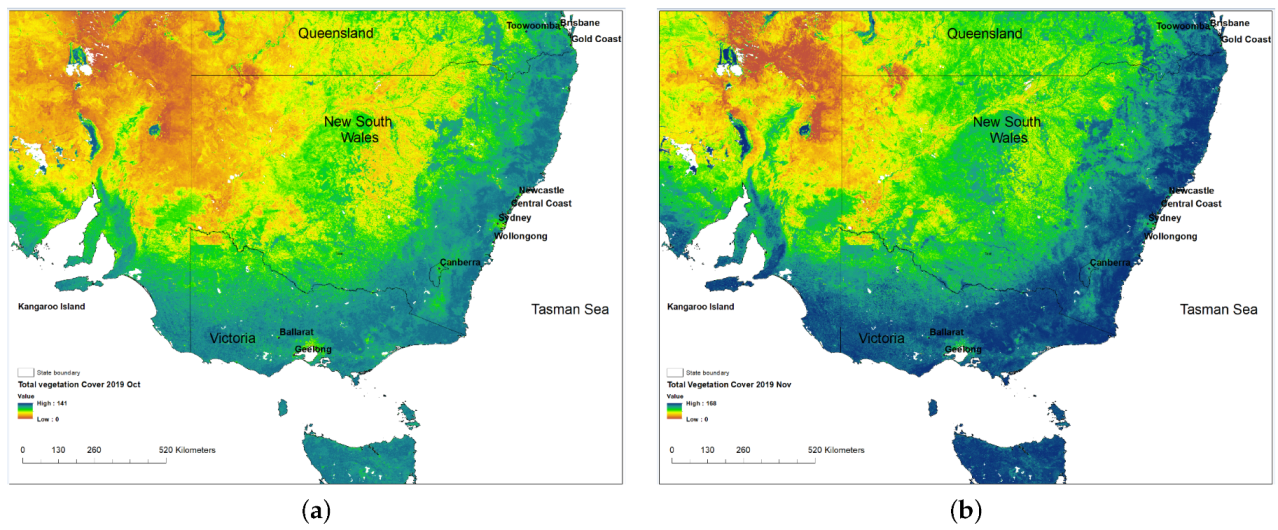
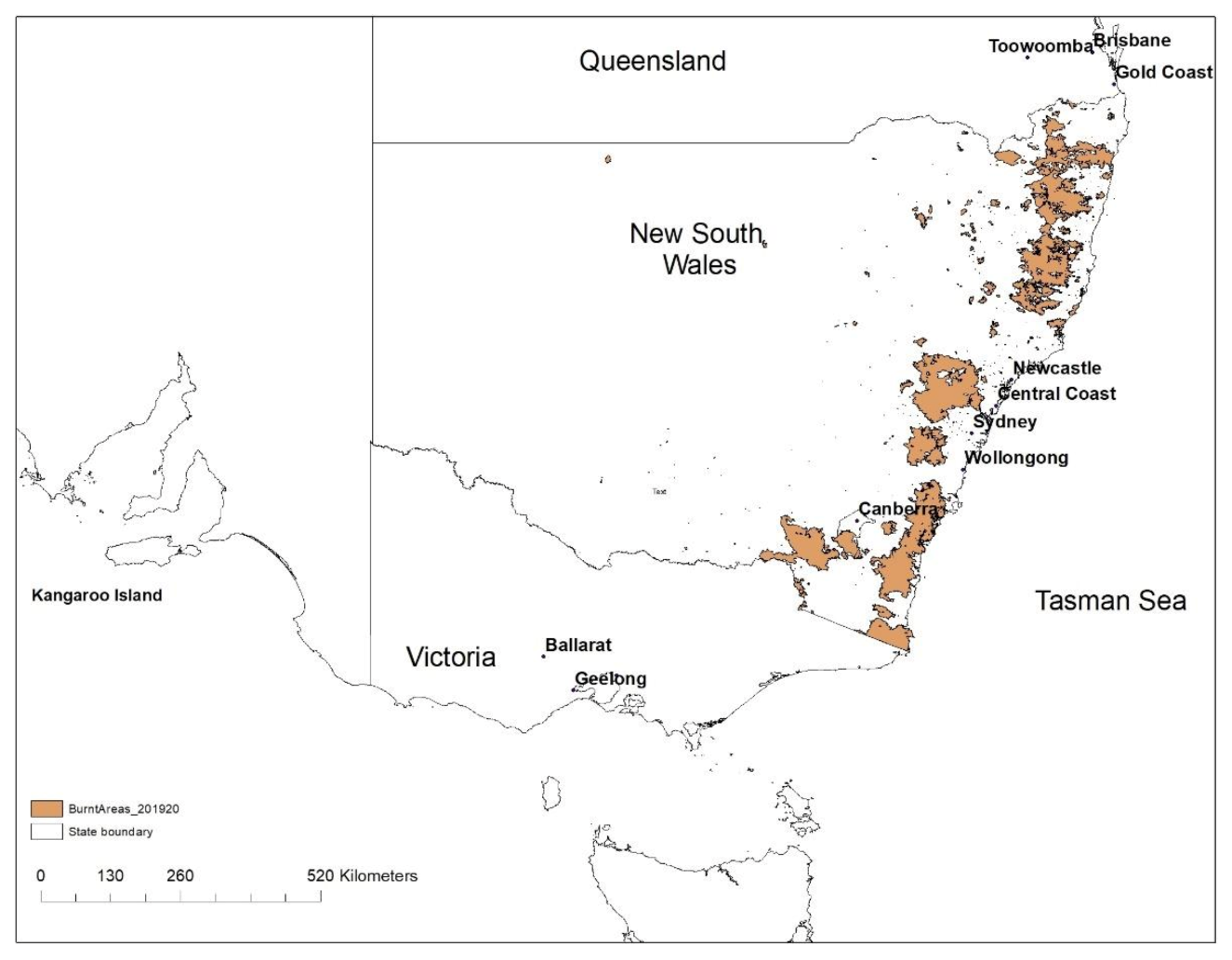
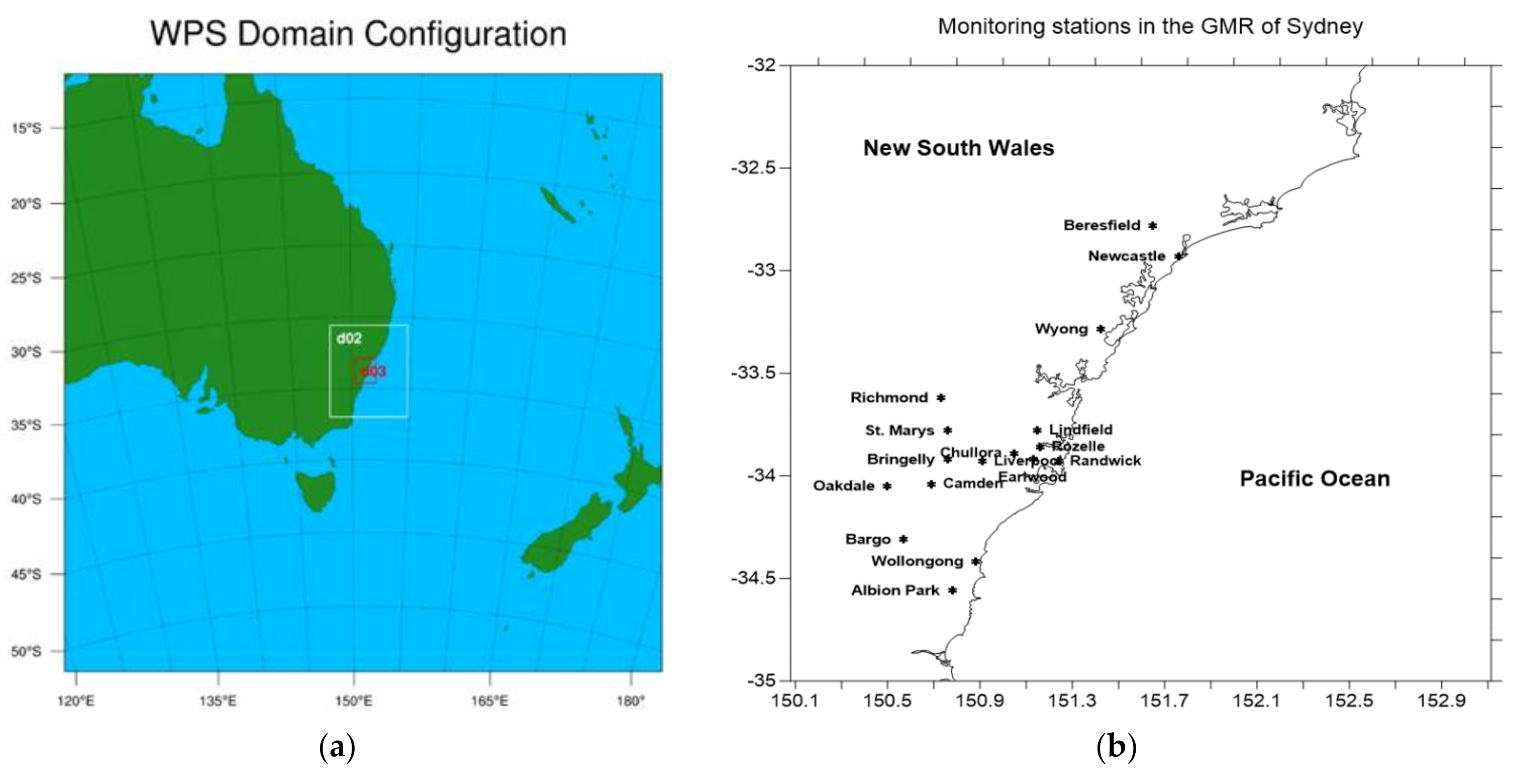
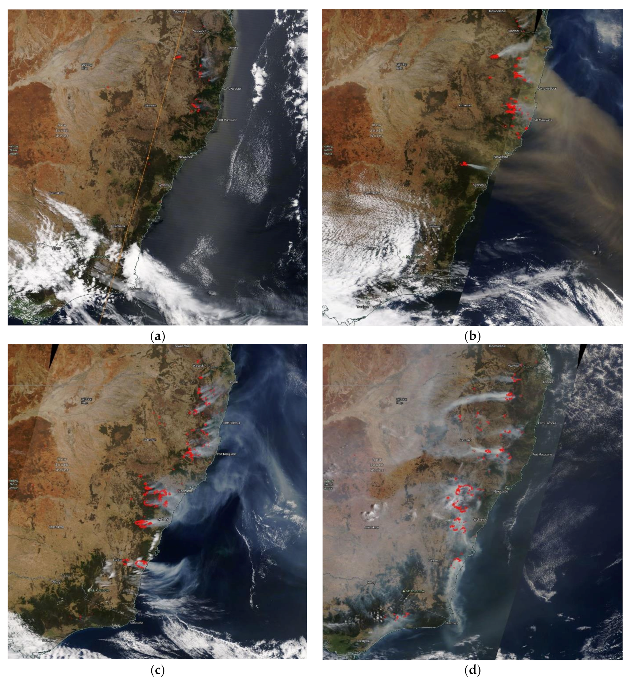
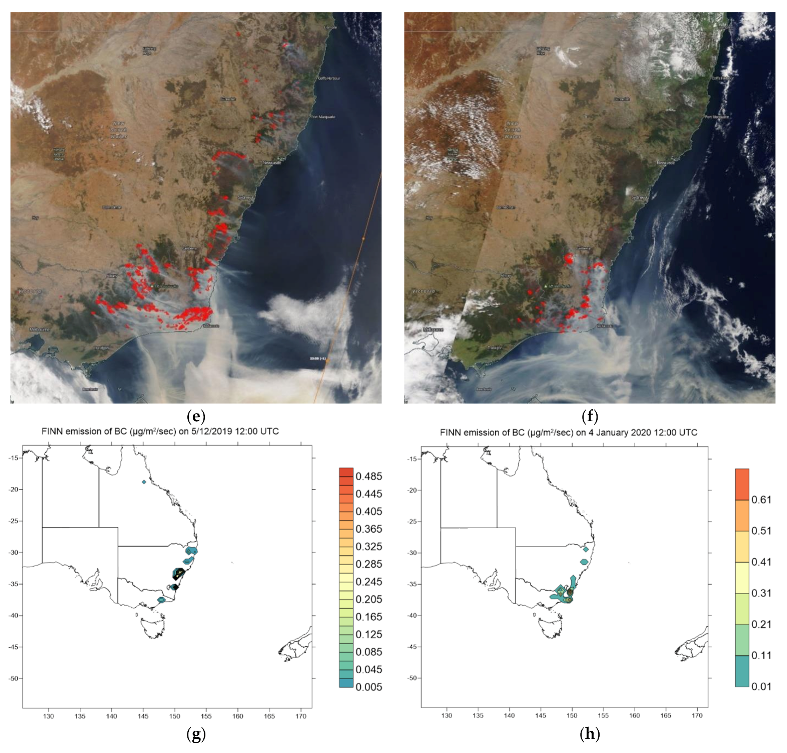
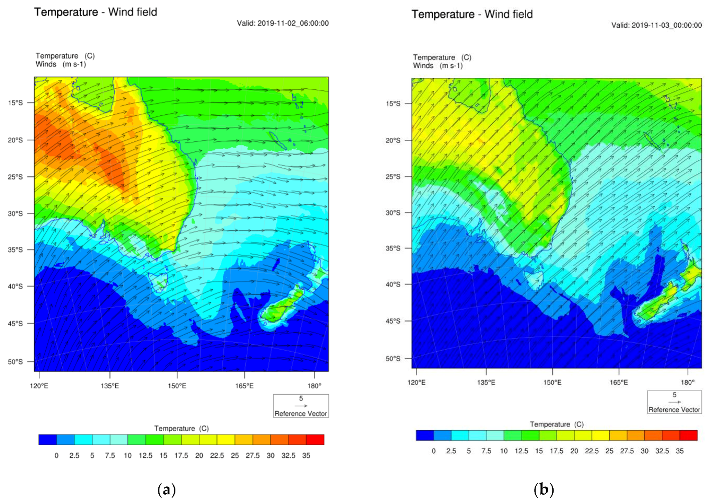
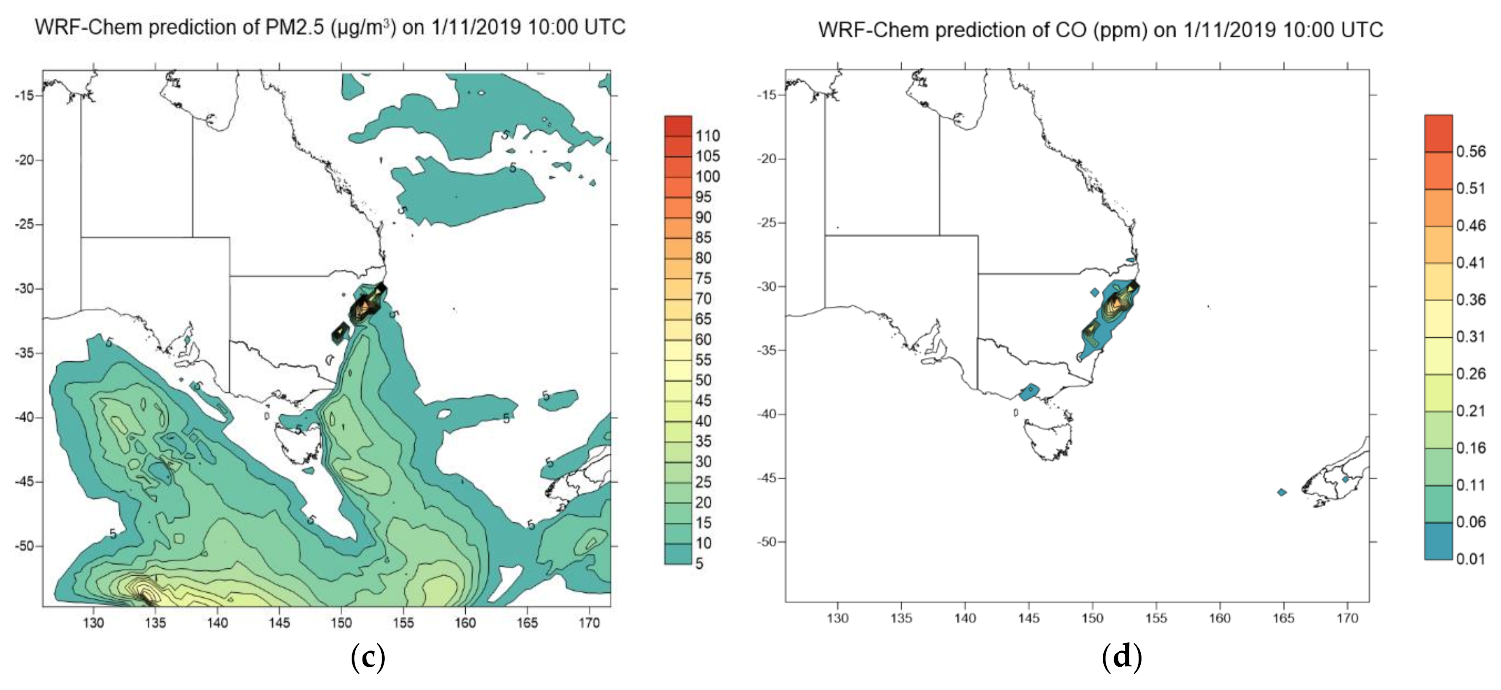
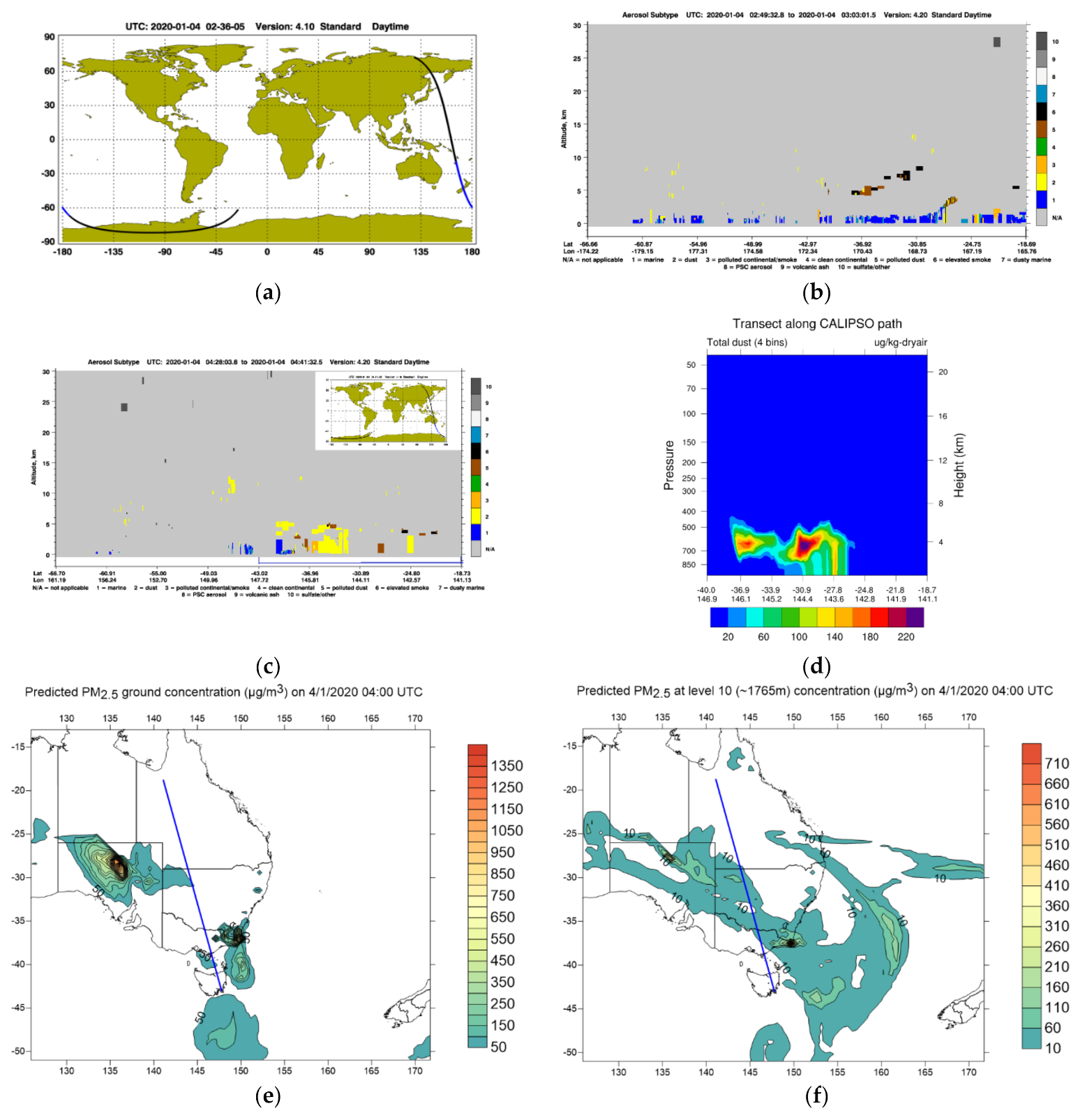
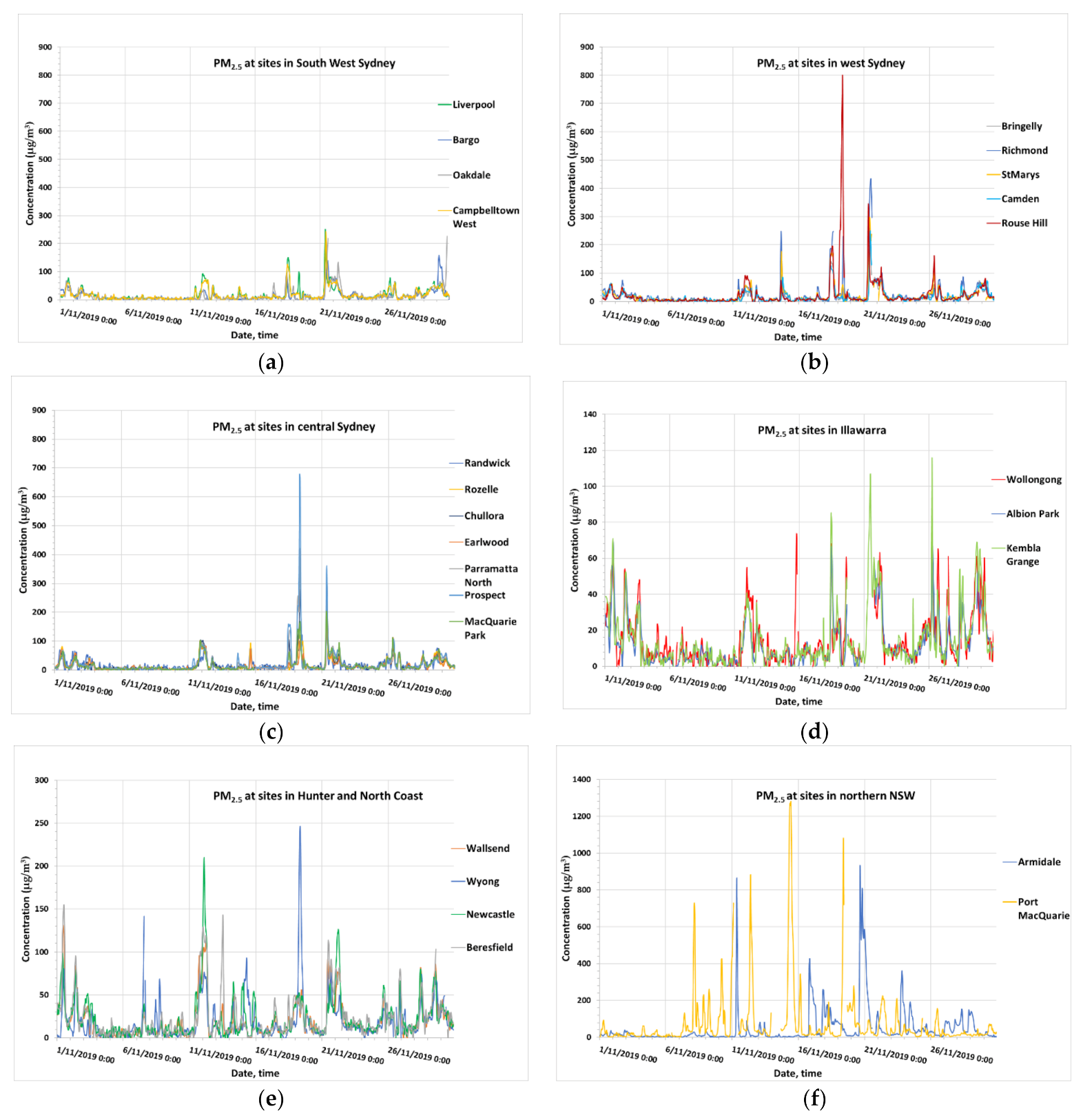

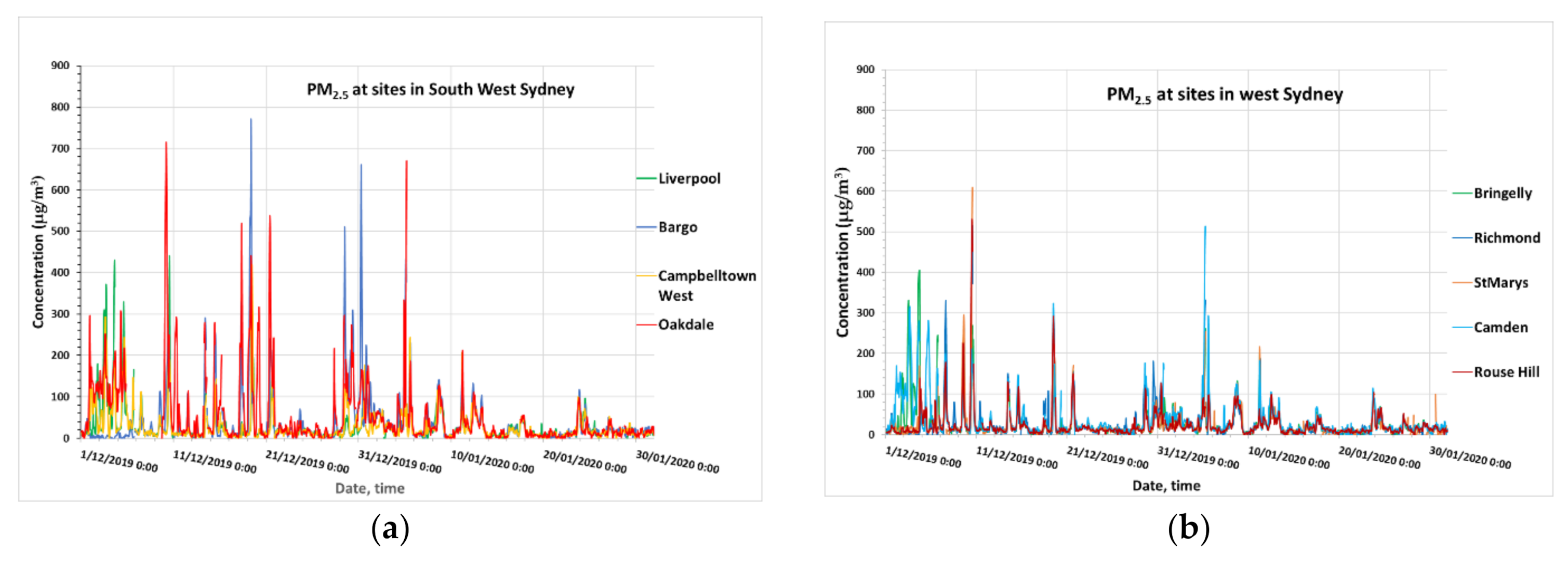
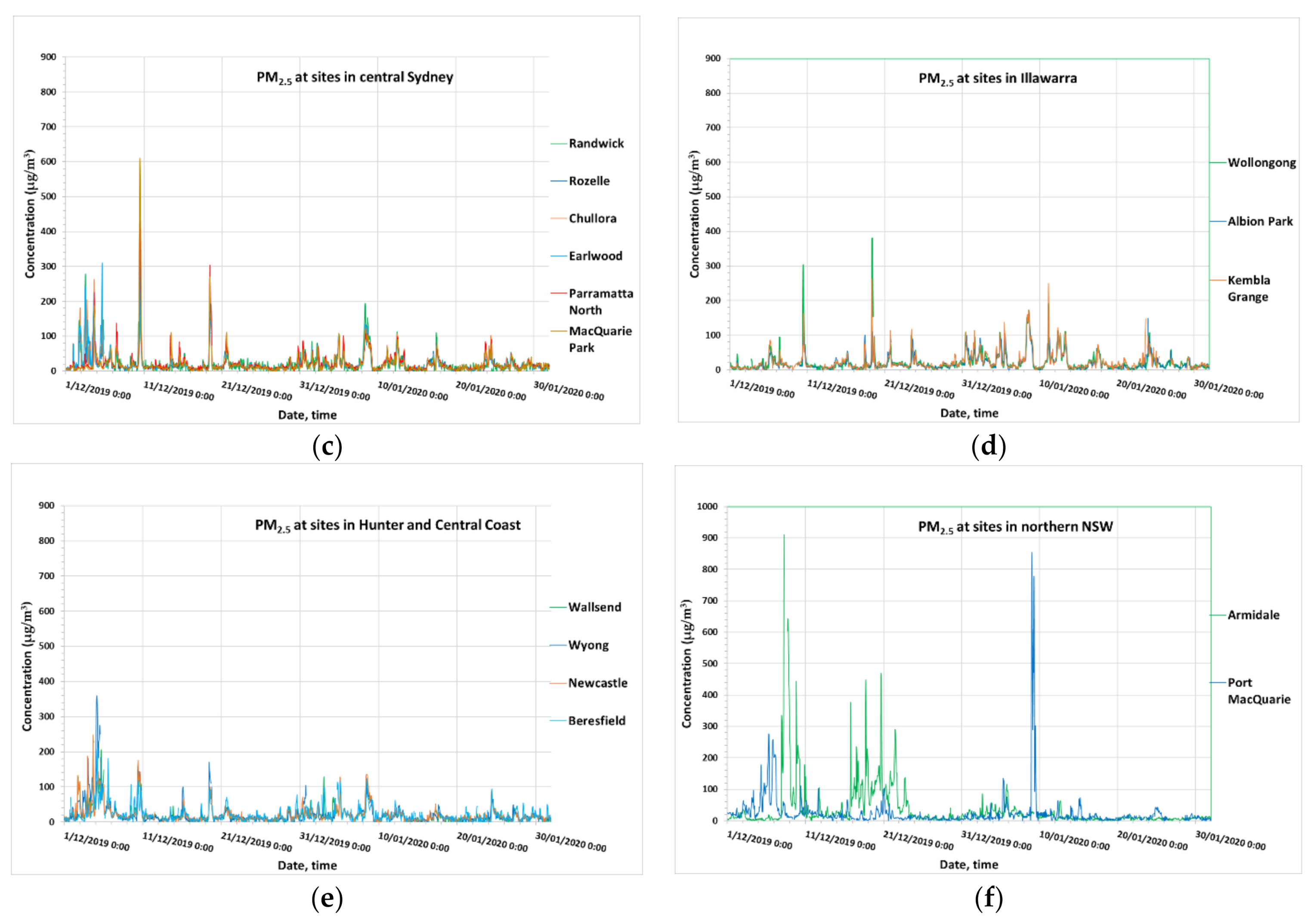
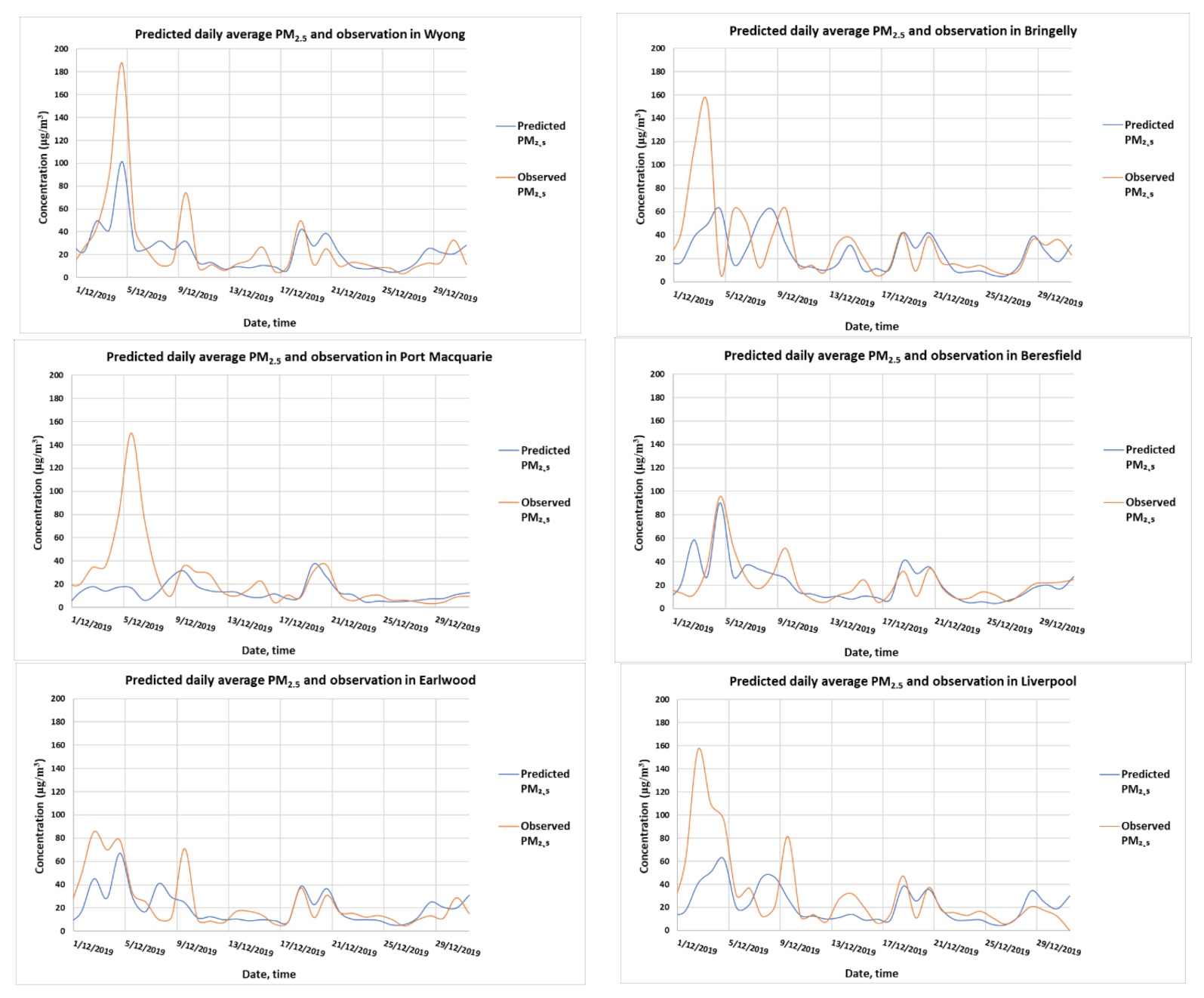
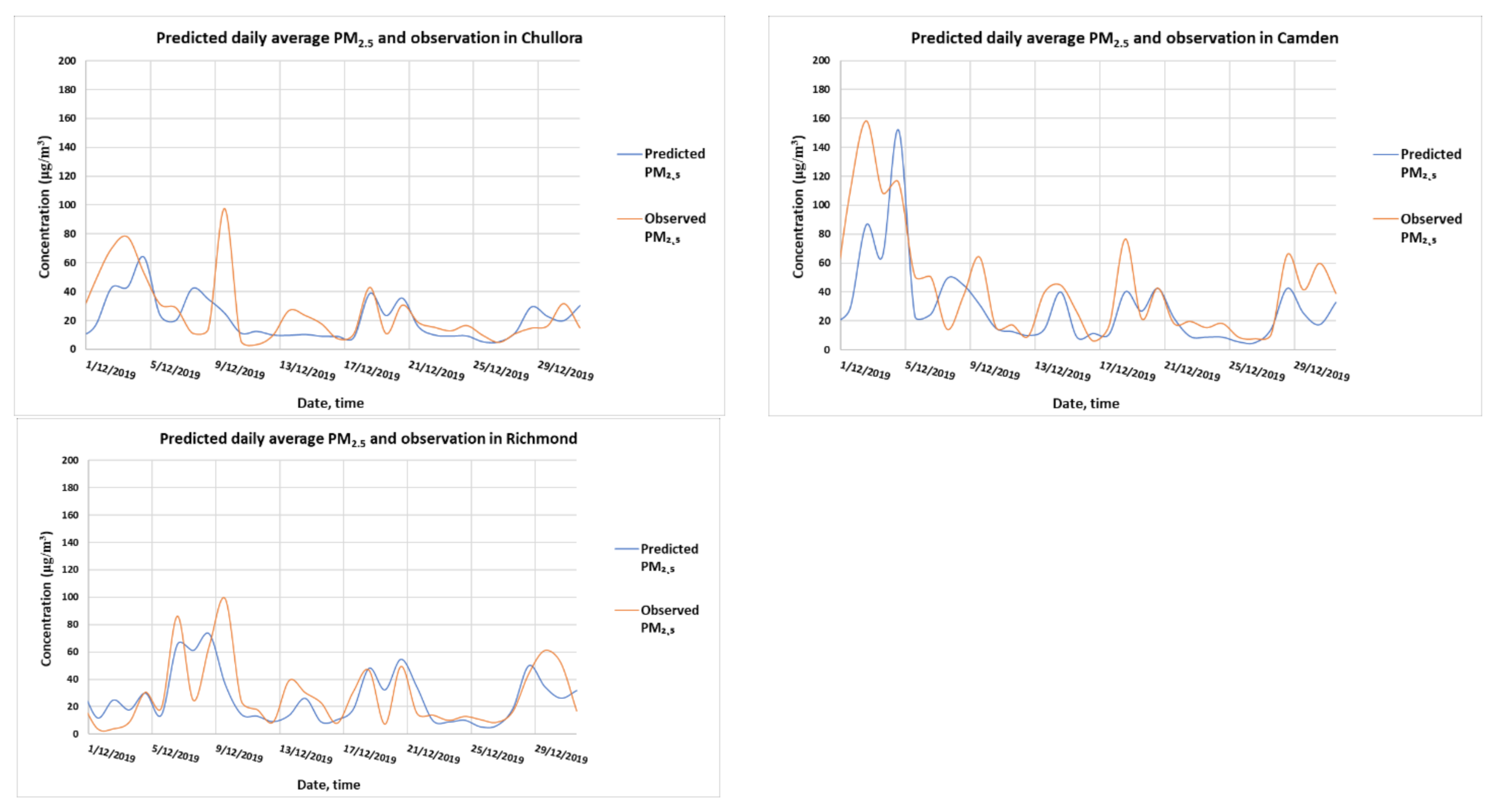
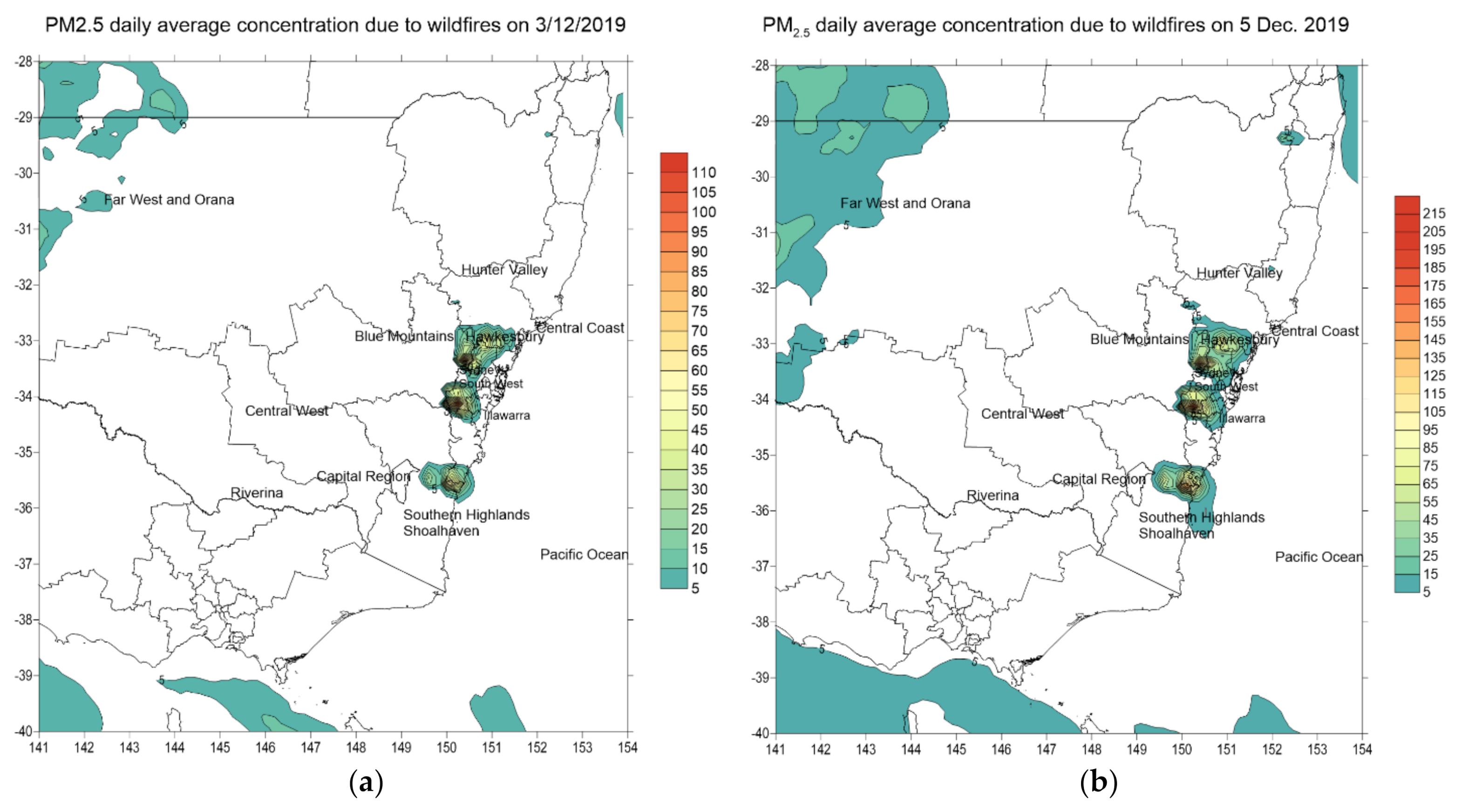
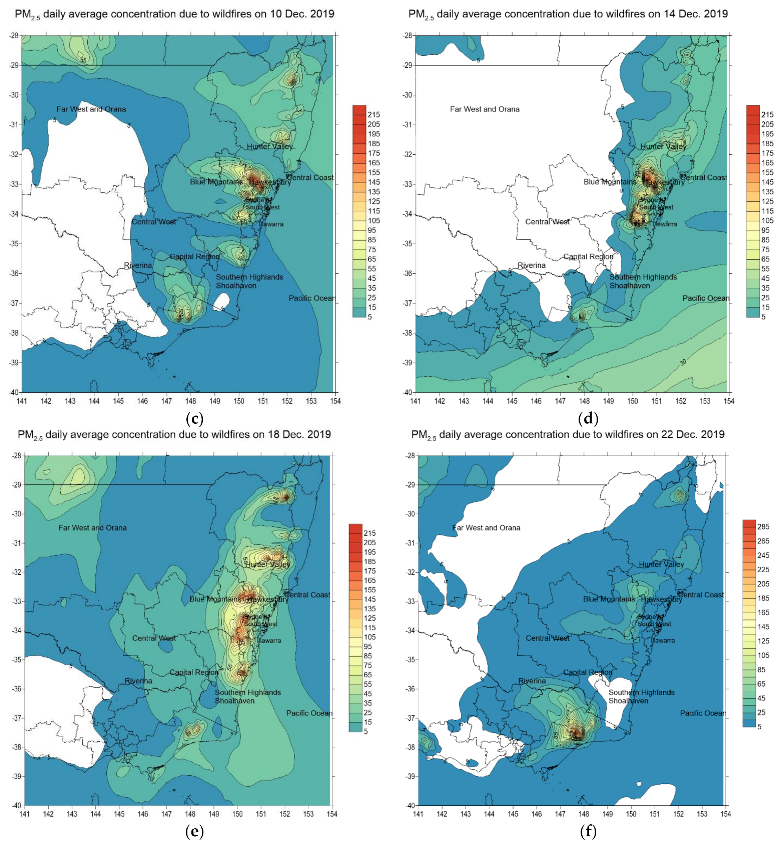

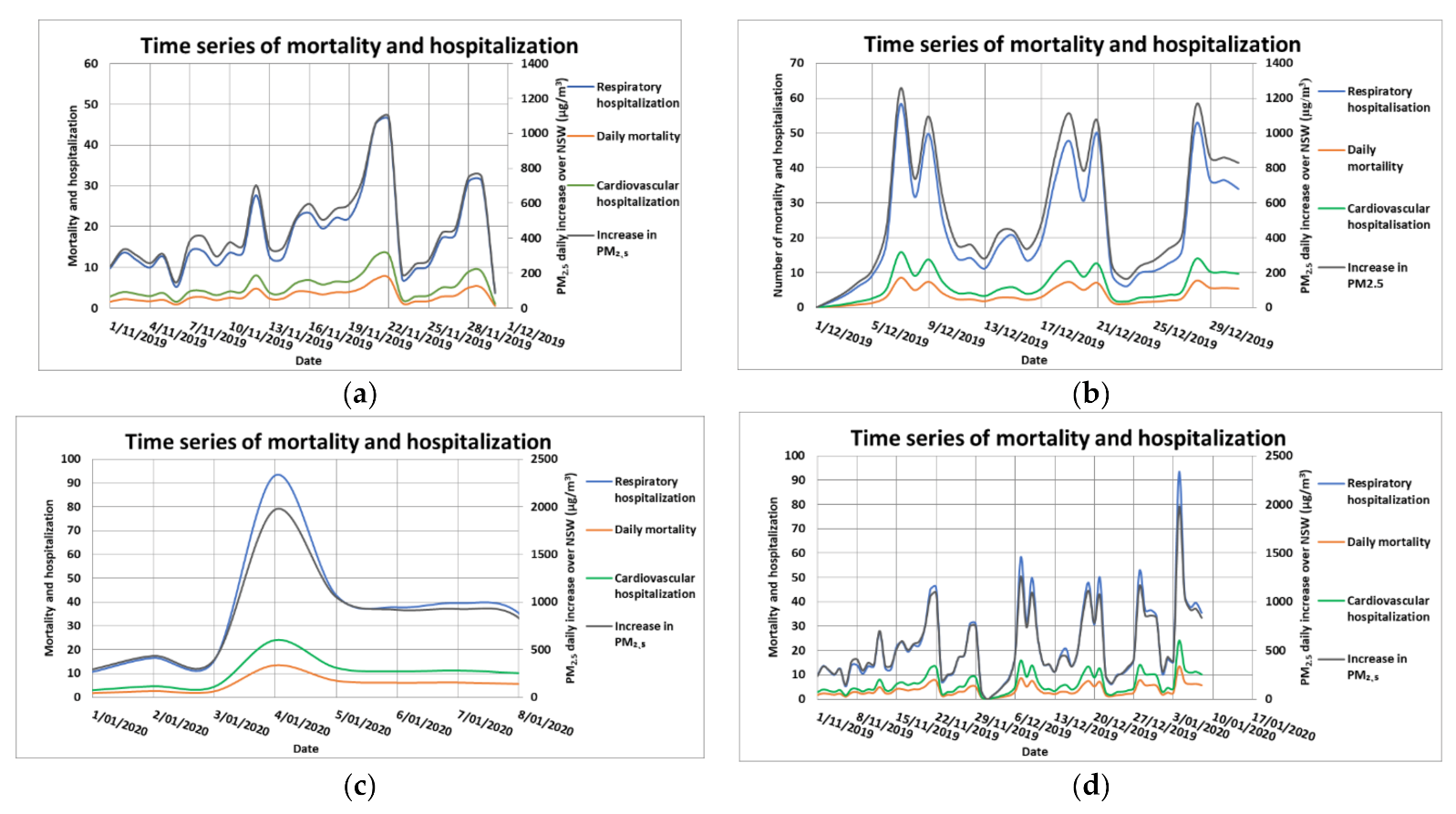
Publisher’s Note: MDPI stays neutral with regard to jurisdictional claims in published maps and institutional affiliations. |
© 2021 by the authors. Licensee MDPI, Basel, Switzerland. This article is an open access article distributed under the terms and conditions of the Creative Commons Attribution (CC BY) license (https://creativecommons.org/licenses/by/4.0/).
Share and Cite
Nguyen, H.D.; Azzi, M.; White, S.; Salter, D.; Trieu, T.; Morgan, G.; Rahman, M.; Watt, S.; Riley, M.; Chang, L.T.-C.; et al. The Summer 2019–2020 Wildfires in East Coast Australia and Their Impacts on Air Quality and Health in New South Wales, Australia. Int. J. Environ. Res. Public Health 2021, 18, 3538. https://doi.org/10.3390/ijerph18073538
Nguyen HD, Azzi M, White S, Salter D, Trieu T, Morgan G, Rahman M, Watt S, Riley M, Chang LT-C, et al. The Summer 2019–2020 Wildfires in East Coast Australia and Their Impacts on Air Quality and Health in New South Wales, Australia. International Journal of Environmental Research and Public Health. 2021; 18(7):3538. https://doi.org/10.3390/ijerph18073538
Chicago/Turabian StyleNguyen, Hiep Duc, Merched Azzi, Stephen White, David Salter, Toan Trieu, Geoffrey Morgan, Mahmudur Rahman, Sean Watt, Matthew Riley, Lisa Tzu-Chi Chang, and et al. 2021. "The Summer 2019–2020 Wildfires in East Coast Australia and Their Impacts on Air Quality and Health in New South Wales, Australia" International Journal of Environmental Research and Public Health 18, no. 7: 3538. https://doi.org/10.3390/ijerph18073538
APA StyleNguyen, H. D., Azzi, M., White, S., Salter, D., Trieu, T., Morgan, G., Rahman, M., Watt, S., Riley, M., Chang, L. T.-C., Barthelemy, X., Fuchs, D., Lieschke, K., & Nguyen, H. (2021). The Summer 2019–2020 Wildfires in East Coast Australia and Their Impacts on Air Quality and Health in New South Wales, Australia. International Journal of Environmental Research and Public Health, 18(7), 3538. https://doi.org/10.3390/ijerph18073538








